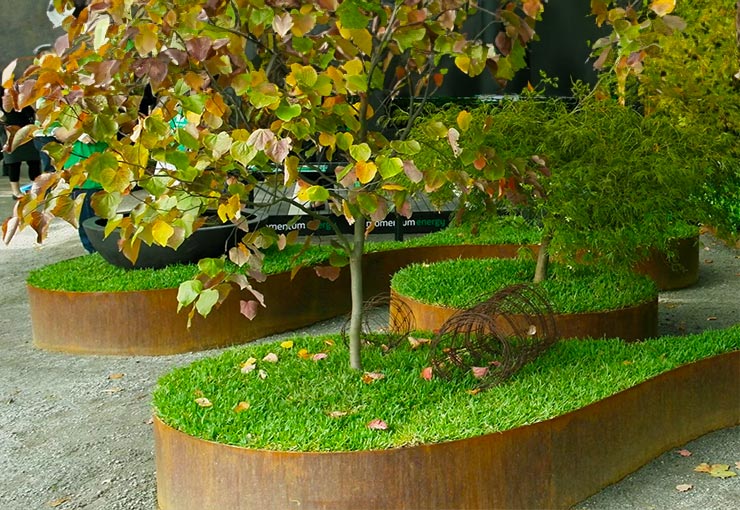Weathered steel, sometimes referred to as oxidized steel or rusted steel, has a surface that has been roughened by exposure to chemicals or physical actions. The resulting patina of rust may be greenish-blue, greenish-black, or even orange red. This patina can be uniform in color or splotchy in appearance. It may have patterns similar to what you see on an old truck bed that has been sitting outside for decades. This unique look can be charming and give your space character, or it may be a deal-breaker for you. Regardless, the truth is that weathered steel is a beautiful material that has many unique and fascinating properties. To give you a better understanding of this material, here are five facts about weathered steel you probably didn’t know.
5 Facts About Weathered Steel You Didn’t Know
Weathered steel with their distinctive, pockmarked appearance that looks like something between charcoal and rust are one of our most popular materials. While it may look out of place in modern buildings, new uses are being invented all the time. Here are five facts about weathered steel you didn’t know:
1. Longer Lifespan
It might come as a surprise to some, but weathered steel actually lasts longer than its cold-rolled steel counterpart. If exposed to extreme conditions of moisture and salt, all kinds of metals will corrode, but after exposure to these same elements, weathered steel only develops a thin coating of rust (which inhibits further corrosion), while galvanized steel will corrode quickly and completely turn into rusted flakes. As mentioned above, weathered looks like rust or charcoal when it’s exposed to these conditions; however, if treated properly—i.e., sealed in place, so it doesn’t have direct contact with air or water—the color can be preserved indefinitely in areas where there is no risk of high humidity or precipitation.
2. Sturdy and Durable
Just like every other kind of steel, weathered is a very sturdy material that can support a lot of weight in different types of construction. This doesn’t mean that you should always use weathered in place of any other material; however, it simply means that if you are in need of a material to support heavy weights without having to compromise on aesthetics, then weathered is an excellent choice for your project.
3. Save On Painting
The whole purpose of weathered steel is to bring your premise the old, rusty look. And what’s the purpose of painting? To protect a building from rust and corrosion. So, when you invest in a weathered steel product for your project, not only do you get aesthetically pleasing results but also time-saving ones—you won’t have to go through two stages of painting! This can be particularly handy if you’re working on a tight schedule or budget; there’s no point having downtime while paints dry!
4. Can Be Used in A Variety of Settings
From art and sculpture to garden ornaments and furniture, weathered steel is a material that can be used in a variety of settings, including areas with high moisture or climate fluctuation. Take, for example, a gazebo—it’s a structure you don’t often see made from weathered steel, but it works really well as long as there is proper protection from rainwater runoff. Alternatively, its rusty aesthetic can easily blend into any environment, whether it’s an urban setting or natural space like a wildlife reserve.
5. Greater Resistance Against Atmospheric Corrosion
Unlike most other metals, weathered steel has greater resistance against atmospheric corrosion, meaning it doesn’t need much maintenance if installed correctly. Even though its color is often mistaken for that of rust or charcoal, in reality, there is no rusting process happening to weathered steel when exposed to air—instead, it’s just creating a thin layer that prevents further corrosion while still allowing evaporation of water molecules to naturally pass through. Remember that even though weathered steel looks damaged, nothing structurally should be compromised—it can take more abuse than you might think!
Conclusion
Weathered steel is a great investment if you’re in need of a material to withstand harsh conditions. From climate fluctuations and high-humidity regions to coastal areas, weathered or rusted garden edging is durable and sturdy enough to serve your purposes for years to come.
